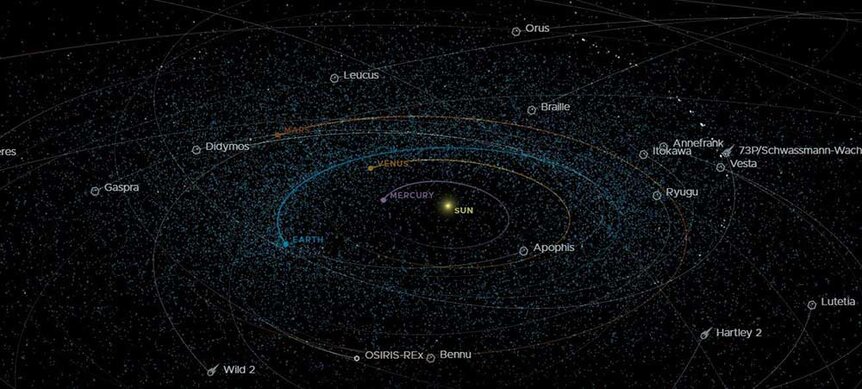How Astronomers Found Albert the Asteroid After 89 Years
It took nearly a century to solve this asteroid cold case.

From The Black Dahlia to the nature of dark matter and dark energy, nothing captures the attention of the masses like an unsolved mystery. In the early 20th Century, an Austrian astronomer named Johann Palisa discovered an asteroid called Albert which would become the subject of one of the longest “missing persons” cases in all of astronomy.
Palisa first observed the asteroid officially known as 719 Albert on October 3, 1911, from the Vienna Observatory. He observed it a second time the following night and then never again. For the next 89 years every attempt to locate Albert failed, the asteroid having seemingly vanished into the inky blackness of space. That is, until astronomers rediscovered Albert at the turn of the millennium.
The Asteroid Albert Was Missing for 89 Years Before Astronomers Found It Again
Finding an object in space is hard –– they are so small, and space is so big –– but finding them again is usually easier. Asteroids operate inside orbits, so if you know where something is, how fast it’s moving, and what direction it’s traveling, you can usually calculate where it will be in the future and catch up with it later. During initial observations, astronomers usually calculate an object’s orbit if they can, and additional observations let them tweak those calculations and build better models.
Unfortunately, in the case of the asteroid Albert, those initial calculations weren’t quite good enough. When astronomers went looking for Albert again, it was nowhere to be found. When astronomers finally picked it up again in 2000, they thought they’d found a totally new asteroid, designated 2000 JW8. Only later did they realize that its orbit matched up nicely with the long-lost asteroid from 1911.
For More on Asteroids:
The Asteroid Bennu Is a Time Capsule from the Early Solar System
NEAR and Eros: The Story of the First Asteroid Landed on by a Spacecraft
AstroForge Space Mining Company Prepares for Launch to Secret Asteroid Target
Today, we know that it takes Albert 4.28 years to orbit the Sun. When Palisa scoped it back in the early 20th Century, he thought the orbital period was 4.1 years, and those couple of decimal points were enough to keep Albert out of view all these years. Since its rediscovery, astronomers have learned a lot about the wandering rock.
Albert is an Amor class asteroid, a group of curious but friendly space rocks. All Amor asteroids have three defining qualities. The first is that they are near-Earth objects, with orbits that bring them into close proximity with our planet at least some of the time. Usually, an asteroid making a close approach is cause for concern, but Amor asteroids know where to draw the line.
Amor asteroids' other two defining qualities are that they have an orbital period of greater than one year and their orbital perihelion (closest approach to the Sun) never gets closer to the Sun than we are. The upshot is that their orbital path never crosses the plane of the Earth. They like to dip in close every one in a while for a peek, but they can’t get close enough to cause us any trouble.
At its closest approach, Albert gets within 1.2 AU (astronomical unit, the average distance between the Earth and the Sun) before swinging back out to 4.1 AU. That wide ranging orbit sends Albert careening around the Sun every 4.28 years and we know that now, because astronomers spent the better part of a century searching the skies. There’s a lot about the cosmos we still don’t know, but it feels good to be able to close a cold case every now and again.
For an unsolved terrestrial mystery, catch The Black Dahlia from Universal Pictures.





























